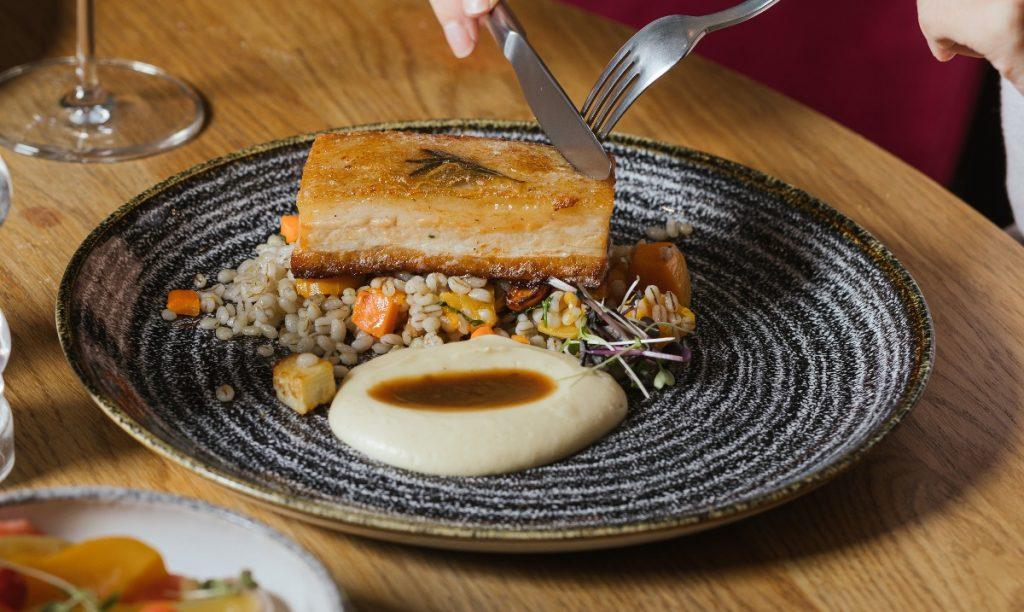- Litvak forshmak. This dish had no name for a long time. However, in 1870, it was already described as forshmak. This herring tartare was a favourite and long-standing dish in the kitchens of many Vilnius residents. Price: 6.50 €
- Lithuanian beetroot soup. If you were transported back to the Middle Ages, you would be surprised to see beetroot soup on the table. Back then, soup was not made from beetroots, as it is today, but from beetroot leaves. Over the years, other leafy plants, pieces of meat and chard have been added to the soup. Price: 4.95 €
- Litvak kishke is a Jewish version of the Lithuanian vėdarai (traditionally, pig’s intestines stuffed with mashed potatoes). Kishke is made of potato dough and mushroom stuffing. Before the Second World War, kishke became one of the symbols of Litvak cuisine. As historical data suggests, kishke can certainly be called an authentic Vilnius dish. Price: 9.50 €
- Lazanki. Lazanki came to Lithuania with the cuisine of the Bona Sforza court. It is a kind of version of lasagne. The dish is made from wheat flour and served with cottage cheese, hard cheese, roasted pumpkin, cedar pine nuts and spinach. Price: 8.50 €
- Jesuit bigos. Bigos is meat that has been boiled or fried and stewed repeatedly, cut into smaller pieces. It is not known what wine was used to braise the meat. The dish is made from beef and served with fried onions, spinach and crushed small potatoes. Price: 14.90 €
- Lithuanian vereshchaka. Vereshchaka can be found mentioned by most 19th-century authors as a typical Lithuanian dish. In 1855, while travelling around Vilnius, the publicist and poet Władysław Syrokomla noted that ‘Lithuanians love fat: pork is a necessary delicacy on their table’. In the past, we could find various recipes for vereshchaka, but the recipe has become more established over time. Cooked and fried pork bacon is served with pearl barley, fried pumpkin and apple puree. Price: 13.90 €
- Stefanija. In 1918, the House of Signatories was home to a confectionery, famous for its cakes and pastries. This candy shop was a popular gathering place for the intelligentsia: university professors and poets used to spend time there. It would not have been surprising if the speeches on Lithuania’s independence had also been made while enjoying this dessert. We invite you to enjoy an improvisation of this cake created by FORTAS chefs. Price: 3.95 €
- Krupnik. This beverage was created in 1593 by Benedictine monks living in the Radvilas’ estate. For a long time, the liqueur was popular only in Lithuania, but in the 19th century it began to spread to Poland and then to other countries around the world. Vilnius residents used to drink it heated to 50 degrees. Price: 3.50 €
Period: 12 January to 12 February
Addresses and contact details:
- Algirdo g. 17, Vilnius, tel. 8 652 01138
- Vilniaus g. 18, Vilnius, tel. 8 637 37000
- Konstitucijos pr. 7A, Vilnius (Europa shopping centre), tel. 8 650 96994

